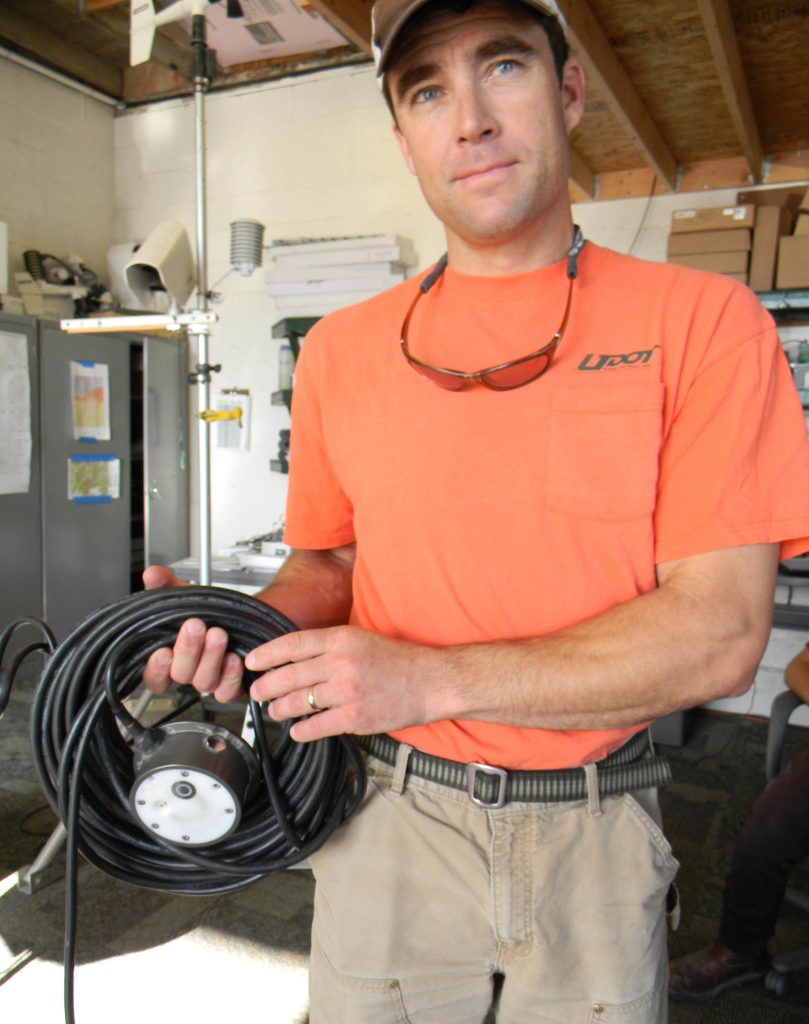RWIS Update
July 31, 2012
New RWIS system upgrades and stations will help plow crews work more efficiently this winter.

Weather forecasters at UDOT rely on information from Road Weather Information Systems placed strategically around the state to make area specific, accurate and timely weather reports to help maintenance crews and motorists. Summer is spent updating RWIS Stations in preparation for the snow season.
RWIS stations are Intelligent Transportation System devices coordinated at the Traffic Operations Center. The devices record air temperature, road temperature, solar radiation, humidity and some detect salinity on the road.
The salinity information “is really helpful to maintenance shed people and how they do their jobs in the winter,” says Leigh Sturges, UDOT Weather Information and RWIS Manager. “There’s a big push this year and next to put all our RWIS up to a higher quality standard,” she says. By fall 2012, more RWIS stations will have sensors that detect salinity and eventually, all stations will have the helpful devices.
The sensors that detect salinity are a little larger than hockey pucks and are embedded in the pavement along with cables that are connected to the RWIS station. Sensors send readings back to the TOC. Maintenance station employees can easily access the readings online.
Roger Frantz, Parley’s Canyon Maintenance Station Supervisor for UDOT has been using the temperature and salinity data gathered by RWIS stations for about eight years – ever since the stations were first installed. The information helps make plowing operations more efficient by helping plow operators know how much salt to use. “Our goal is to just put down enough salt to keep the road from freezing.”
Using salt breaks the bond between the ice and the pavement and allows plow operators to remove snow and ice efficiently. A too-heavy salt application is expensive and can be counterproductive. Because of the endothermic reaction that occurs, salt actually takes heat from the road. Heavy salt application is especially a problem during storms that last through several days.
“By depressing the road temperature too much, you can exhaust your energy source, which is heat,” says Frantz. Plow operators need to use enough salt to keep the road from freezing until the next pass when more salt is used. By using the RWIS sensor readings, his station now uses one-third the amount of salt as was used previously.
In addition to new sensors, six new RWIS stations will be deployed – two located along the Mountain View Corridor, two installed on the I-15 CORE project and two installed on I-80 near Coalville.
The installation crew will also put in an icy bridge system on Fish Creek Bridge on I-70. The system uses a non- invasive sensor pointed at the road surface to detect friction and send a signal to activate a sign that warns motorists of icy conditions on the bridge.



